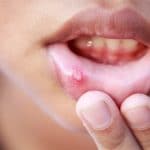
Losing their baby teeth
At around the age of six or seven, your child’s ‘milk teeth’ or ‘baby teeth’ (whatever you call the teeth you have before your permanent teeth come through), will become loose and wobbly due to the bigger, permanent ‘adult tooth’ underneath pushing through the gum upwards. This can be traumatic for your child if they are taken by surprise! It can be quite a shock for them if they have no idea about tooth loss, and all of a sudden their tooth is wobbling about (sometimes painfully), and their gum may bleed. Make sure your child is aware of tooth loss, and that it is a natural process, not something to be frightened about! Also make sure that they understand that once their ‘big teeth’ grow through, they won’t get any more teeth, so they need to look after their teeth by daily brushing and flossing, and not consuming too many sugary foods and drinks.
What order are teeth lost in?
There is no particular known order that teeth are lost in, although it is thought that they are lost in the same order that they came in. Often the bottom teeth in the centre go first, and then work their way outwards from the front to the back.
Things to watch out for when your child is losing their teeth:
Seek medical advice if your child loses his or her teeth prematurely (before the age of about six), due to tooth decay or an accident.
• If your child is in a lot of pain or discomfort with a wobbly tooth, try to ease his or her pain with a cold compress or medicine from your pharmacist.
• Seek medical advice if your child still hasn’t lost a tooth by the age of eight.
• If the big tooth is growing in behind the baby tooth, and the baby tooth still has not fallen out, it could be worth going to the dentist, and the dentist will make a decision on whether to pull out the baby tooth or not.
What to do after your child has lost his or her tooth
The more your child wiggles their tooth, the sooner it will come out. If you force it out, it can be quite sore and bleed a bit. Tell your child to brush the area gently so as not to irritate it and cause further swelling. Also, get your child to gargle warm salty water, as this will help clean the wound and stop the bleeding. If there is a lot of bleeding, use a tissue or a clean finger and apply pressure to the gum until bleeding ceases








